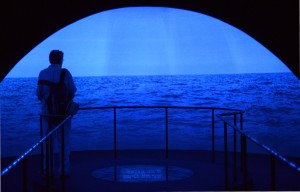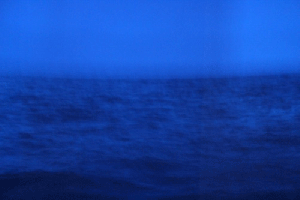Water in Islamic world
In many passages of the Koran water is a main theme in the cosmogony and Islamic iconography, as well as in the liturgy and in everyday life is a recurring topic. Water for the Islamic world isn’t so just divine; for the community of believers (Umma) it has practical meanings that go far beyond the religious symbolism; the water dispenser of life and material sustenance.
It is the source of all living things on Earth, the substance with which Allah created man. Water is a gift from God; every believer has the right to it as well as the other fundamental elements: fire and grass (pasture, desert environment, symbolize the necessary sustenance for animals). No one can steal a good created by God in a way that could harm (or limitation of that very well) to others. Free access to water by man (and therefore the right to have in a reasonable amount) was over time declined from Islamic doctrine more regularly, going so far as to specify a priority
in different needs:
-first of all there is the right to the primary need to quench your thirst of man;
-There is also that of their animals.
-Finally the right of irrigation fields.
The right to water is not a prerogative only of men, however. He is not the arbiter of fate of living beings; Instead, the keeper of creation, with very specific responsibilities; so even animals and plants have the right not to die of thirst, thus demonstrating an unexpected cut “environmental” Koranic teaching. In Islamic tradition, there is a rich literature on priorities in needs to be fulfilled, on the possibility of acquiring water rights, to exploit the sources, to be able to sell. Or, again, on how to maintain the wells and springs, crossing then legal rules with hygiene requirements
(prohibitions of human activities to prevent water contamination) and social ones (equitable sharing of water resources).
Water in the Arab countries
The development of water resources is one of the challenges that the Arab countries will face in this century, especially due to the fact that our freshwater resources are decreasing.The Arab area, a tenth of which is desert, is considered one of the poorest areas of freshwater resources. Contains less than 1% of the planet’s surface fresh water and receives only 2% of the rain. But the problem of water in the Arab area is not only the problem of scarcity: it is also a problem of quality.
For various reasons the water quality is deteriorating and large amounts of water are becoming unusable. The problem of the shortage extends to all sources of water in the Arab world. The Arab world has three basic water resources: renewable surface water, groundwater, partially renewable and limited amounts of water artificially, like that produced by
desalination and purification plants. Rain is the most important way for renew the surface waters. Regarding non-conventional resources, desalination, a system that is used mainly by Libya and the Gulf countries, represents the 75% of the water consumed in the Gulf countries.
The water is critical to the Middle East with its extensions of the drylands, the ambitious economic development projects and a higher-than-average population growth. In the Arab area the water will become one of the leading, if not the main reason of confrontation when the voltage for the lack of water will increase under the impact of
population pressure and the demands of economic development.
The water issue will turn into a political problem, where freshwater resources become scarce. Water projects of countries at the source or along the tributaries of major rivers that provide 85% of fresh water available could be considered a threat. This threat and the specter of war would be greater if there were no international treaties relating to the rights
of use of international rivers or water if such treaties were overtaken by circumstances, thus requiring their revision or where there were international mechanisms with the power to compel habits or agreements on rights to use water. In other words, the problem of water in the Middle East is a national security issue.
Water scarcity not only hinders the ability to meet the immediate needs of the population, but stops the development and agricultural production, endangering food security. Without this protection the Arab countries cannot achieve economic self-sufficiency and, therefore, a real autonomy.
Starting from the second half of the 20th century, the Arab region had to maximize the use of the water and had to compete for more water to be able to face three main challenges:
– a rapid increase in population;
– agricultural expansion and industrial development in order to feed the growing population;
– the management of water resources.
You must also consider that the challenges are more complicated together. Demographic growth means that the population doubled in a short time and more and more quickly, which means that agricultural production must double in a short time and faster and faster and, as a result, even the water is consumed must increase the same way.
There is no wonder that, in an area with limited water resources, some countries with the power and ability to dominate water resources seek to check before their present and future needs and then try to use water as a weapon to bend other Nations at its will.
While the safety of the water supply is increasingly under threat and is going to become a critical resource, you can easily imagine that the water will become not only a key resource for agriculture and industrial development, but also the key to decide between life and death.
Water in Kazem’s work: Walking on Water
Walking means you have a direction, otherwise you don’t walk, you are wandering. But when you’re in the middle of the sea, you don’t have a direction, but an unstable position. On the water you walk without direction, but you can use a position but you’re in a boundless horizon. Walking on water is, therefore, navigating in the world within
you and outside of you at the same time. There is a way of navigation on a river and a way at sea; There is a kind of water that is sweet and a kind of water that is salty.
Along a river you look for sustenance and security: you have drinking water, water for agriculture, water from getting home to your toilet and vital needs. You use the River in the daytime now. What happens then at sea?
You can’t drink the water of the sea. At sea you do not have the safety of the shore. As soon as you leave your port, it opens in front of you a space and a time where it is the water that lays down the law, not the human being. In the sea a man/woman can only rely on his skill and hope to land in any destination, which will not be his country of origin but a
new land with new people.
The sea calms the thirst not to drink, but it pushes a man/woman to drink in different way. We thirst for knowledge, truth, justice and freedom. A restless soul and stormy swings between the waves of his heart and life. Inner dissatisfaction and desire to know and to meet cross in the lifeboat.
Often in life you travel and walk in the dark. The exhibition space of Kazem’s work is plunged into darkness. You have no stars above you. Under your feet you have only the numbers of the coordinates of your location. In front of you, the sea rocks. You are in an unstable balance, although the minimum safe place to rest your feet. you are in the bow. Alone you face the sea in motion, inside a dome that surrounds you in a . Inside the dome, a man/woman is facing the
sea of his/her life. Time flows forward, but you swing left and right. Questions and doubts arise. Where am I
going? Will I get ever or the sea will suck me among its waves? A man/woman sets sail in the night when he/she departs toward the unknown. The eyes are traitors. In the Sea you sniff the trail and you rely on your feelings generated by the sea. The sea speaks. The sea has an un-modulated language not as the human one. The sea speaks, you must learn to
listen to it.
In this way, water is a powerful evocative tool. The water attracts the nine months of gestation of the fetus in the mother’s womb. So who crosses the sea is as if he was born.
The sea is a place and a time of transition. It is not a hospitable place. The human being is thought for the Earth, he cannot live in water. When you have crossed the sea, you are no longer as before. The hardest thing is the fact the trip… spending days and days, confident even when the stars and moon are not seen. Sometimes the Moon reminds you that you’re
just a human being and the sea reminds you that you are so small, but you have an infinite desire to communicate beyond the confines of your land. You want to see and let you see, You want to know and it lets you know.
The United Arab Emirates in this installation of the Biennale is traveling along the routes of this century. It is popping out to the art, which is a new sea, leaving behind the wilderness and skyscrapers. It doesn’t know where this navigation will take it, but surely the itinerary will lead it to a new world, always. It remains faithful to the sounds of the ocean currents and winds.


